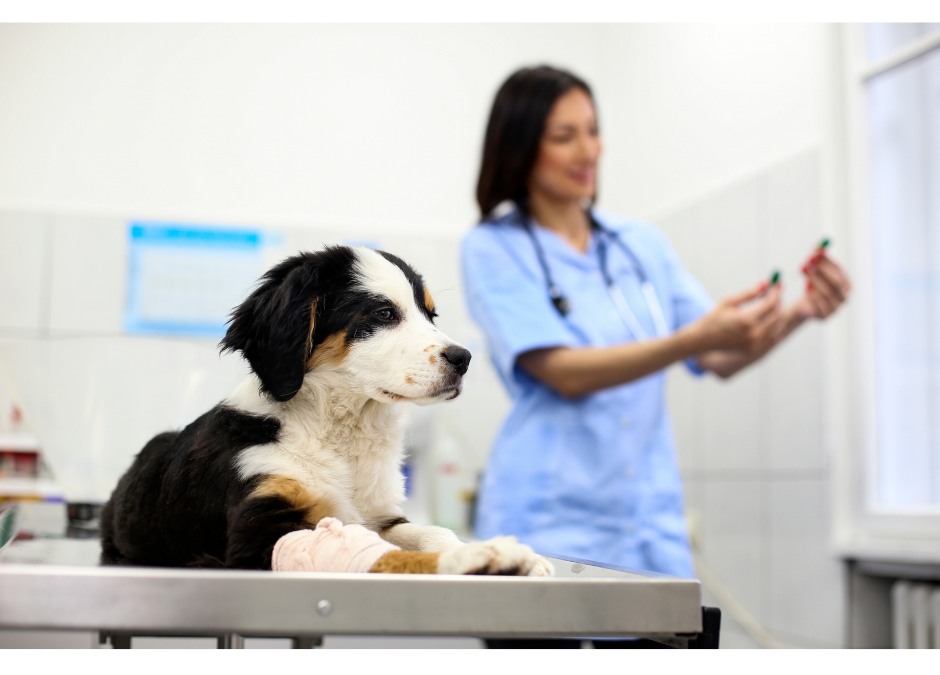Canine Blood Transfusions
Performing blood transfusions are always nerve racking as you are dealing with an unstable patient and life threatening medical concerns. If your clinic currently does or is considering offering blood transfusion services, it is important to consider when a blood transfusion will be performed, blood typing procedures, and monitoring protocols during the transfusion.
Indications for Blood Transfusions
Key indications that a canine patient is in need of a blood transfusion include: anemia, coagulopathy, thrombocytopenia, and hypoproteinemia. The patient’s underlying condition and current blood values will indicate the ideal blood product for transfusion. It is important to fully assess the individual patient, rather than always transfusing patients at a certain PCV or hemoglobin value. When administering blood products, it is important to follow the instructions for the type of product as some need to be thawed or warmed. Additionally, all blood products must be given with an infusion line containing a filter, therefore your clinic must have the appropriate equipment in stock.
Canine Blood Typing
While there are at least 8 canine blood groups, the most immunogenic type is DEA (Dog Erythrocyte Antigen) 1.1 positive. If a DEA 1.1 negative dog receives DEA 1/1 positive blood, they undergo a strongly hemolytic and agglutinating transfusion reaction which can be life-threatening. At this time, testing is only routinely completed for the DEA 1.1 antigen, however, blood donor programs can test for the presence of additional DEA blood groups.
Which dogs need blood-typed prior to transfusion?
All dogs should undergo blood typing, specifically for DEA 1.1 prior to transfusion. However, some clinics choose to only transfuse dogs with DEA 1.1 negative blood, and this alleviates the need for blood typing dogs prior to transfusion.
What is the difference between blood typing and crossmatching?
Commercial canine blood typing kits are specifically looking for the presence or absence of DEA 1.1. This contrasts with major crossmatching which is designed to predict the likelihood of transfusion reactions through detecting the presence of antibodies in the recipient’s serum against the red blood cells of the donor. While minor crossmatching is not always performed, it assesses for agglutination and hemolysis of the donor serum and recipient red blood cells.
It is always ideal to perform a crossmatch prior to a canine blood transfusion. However, dogs do not have alloantibodies which means they do not have any naturally occurring antibodies. While it is controversial, this implies that dogs can have one safe transfusion without crossmatching. It is important to remember that they do develop antibodies to other blood types within 72 hours of their first transfusion. At this point in time, it is especially important that blood typing is done prior to any additional transfusions.
Monitoring for Transfusions
Throughout the transfusion it is essential to monitor for transfusion reactions, which will first be identified through a change in a patient’s heart rate, respiratory rate, temperature, and blood pressure. Additional signs that may be present include vomiting, diarrhea, or facial swelling/ hives. An ideal monitoring protocol includes monitoring patients at 5 minute intervals for the first 30 minutes, then slowly increasing the interval to every 30 minutes. Additionally, a PCV/ TS should be recorded within the first 15-30 minutes of a transfusion to assess for an acute hemolytic reaction.
The most common type of transfusion reaction in veterinary medicine is acute febrile reactions, a form of non-hemolytic reactions. This is typically first identified by an increase in body temperature of over 2*F within 4 hours of the transfusion.
While monitoring during the transfusion is important, hemolytic reactions can be delayed up to a few weeks. Therefore, it is equally important to cross match patients with blood donors prior to transfusions.
There are a multitude of transfusion-related reactions that can occur in canine patients during, or following, a blood transfusion. While these patient’s condition likely already warrant close monitoring, this further necessitates consistent and reliable TPR measurements. Using MeasureON! to monitor patients during and following a blood transfusion helps to ensure that any changes in a patient’s temperature, pulse, or respiratory rate are identified quickly. Additionally, the MeasureON! system allows veterinary staff to spend more time analyzing a patient’s metrics and caring for patients, rather than manually recording patient TPRs. MeasureON! is a wireless system which can be remotely accessed without disturbing the patient. This allows patients to continue to rest undisturbed in their kennels, rather than consistently being disturbed, which will aid in their recovery.
For more information about MeasureON! and how MeasureON! can save your veterinary time and stress while increasing technician efficiency and elevating your standard of care, visit our Veterinarian’s Tab!
Author Profile
Our guest author is Katie Hamilton! Katie is a 4th year vet student at ISU College of Veterinary Medicine. She worked as a intern at VetMeasure for 3 years! Now, she is interested in general small animal medicine! When she isn’t working or studying, she enjoys spending time with her active lab, Belle!

